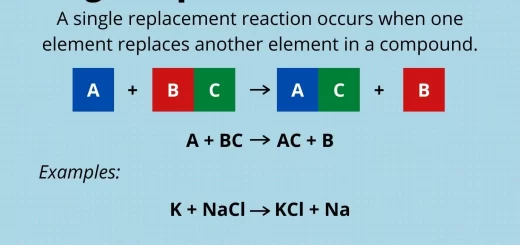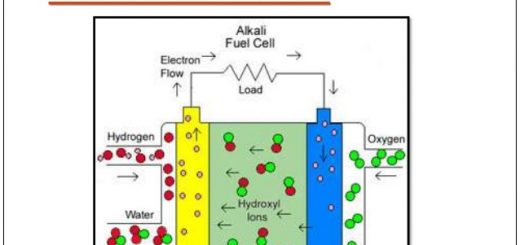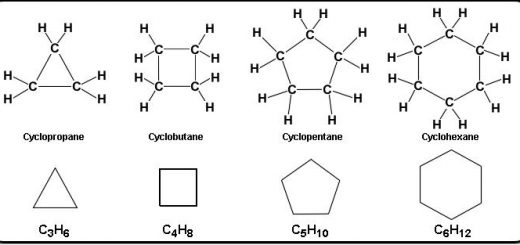Ionization of water, Hydrogen Exponent (pH value), Solubility product and Hydrolysis of salt solutions
Hydrolysis process is the process of dissolution of salt in water and formation of acid and alkali from which the salt is derived, The sodium ion Na+ product from NaOH solution does not tend to react with water because NaOH is a strong electrolyte, completely ionized, Iron III chloride has an acidic effect on litmus solution due to the accumulation of H+ in the solution (pH < 7).
Ionization of water
Pure water is a very poor conductor of electricity, but some conductivity is detected, so some ionization of water must take place as shown in the following equation.
H2O → H3O+ + OH−
For simplification, this equation can be written.
H2O → H+ + OH−
The equilibrium constant is expressed by the relation
Kc = [ H+] [ OH−] / H2O , Kc = 10−14
From the value of the equilibrium constant, it is clear that a very small number of water molecules ionizes, the number of unionized water can be considered as a constant value, therefore, the above relation can be written as follows:
Kw = [ H+] [ OH−] = 10−14
Since water is neutral (no action on litmus), the concentration of H+ ( responsible for the acidic properties) equals the concentration of OH− (responsible for the basic properties).
Then, Kw = [10−7] [ 10−7] = 10−14
Ionic product of water (Kw) is the result of multiplying the concentration of the hydrogen ion [ H+] times that of hydroxyl ion [ OH−], Kw is a constant value equals 10−14 mole/liter.
Ionic product of water Kw = [10−7] [ 10−7] = 10−14 because water is neutral to litmus, the concentration of H+ that is responsible for the acidic properties equals the concentration of OH− that is responsible for the acidic properties for the basic properties = 10−7 mole/liter.
Hydrogen Exponent “pH value”
pH value is the negative logarithm of hydrogen ion concentration, It is used to express the concentration of hydrogen ion by a whole number, It ranges between zero and 14, It indicates the acidity or basicity of an aqueous solution by (+ve) value.
pH = −log [H+] or = −log [H3O+], where p means “−log”.
Referring to the ionic product of water and using the negative logarithm of this equation, the above relation becomes, −log Kw = (−log [ H+]) + (−log [ OH−]) = −log 10−14, Substituting the value (−log) by the symbol, the above equation becomes, p Kw = pH + POH = 14.
In case of a neutral solution, the PH = 7 and pOH = 7 For a solution of pH=5, the POH = 9 and for a solution has a pH= 8, the POH = 6, consequently, the pH value of the acidic solutions is < 7 and the POH is > 7 and for basic solutions the PH is > 7 and POH is < 7.
In case of a strong acid, the concentration of H+ = conc. of the acid, In case of strong alkali, the concentration of OH− = conc. of the alkali, For the same solution the pH value + POH value = 14.
- If pH = 7, the solution is neutral.
- If pH < 7, the solution is acidic.
- If pH > 7, the solution is alkaline.
Hydrolysis of salt solutions
It is the exchange of ions between salt and water to give the acid and base from which the salt was derived.
Acid + Alkali → Salt + Water
The acidic and basic property of the salt depends upon the strength of both the acid and the alkali formed due to the hydrolysis of the salt in water.
Hydrolysis of sodium carbonate Na2CO3
Sodium carbonate is a salt of a weak acid and a strong base, The solution of sodium carbonate turns litmus paper blue, Water is ionized as a weak electrolyte, giving hydrogen ions and hydroxide ions and when sodium carbonate dissolves, it gives sodium ions and carbonate ions as shown by the following equations.
2 H2O → 2 H++ 2 OH−
Na2CO3 → CO32−+ 2 Na+
Na2CO3 + 2 H2O → H2CO3 + 2 Na+ + 2 OH−
In this reaction, carbonic acid, sodium & hydroxyl ions are formed, sodium hydroxide is not formed because it is a strong electrolyte, completely ionized, carbonic acid is formed due to the reaction between hydrogen ions (from ionization of water) and carbonate ions in the solution to give carbonic acid, it is a weak acid, almost not ionized, therefore, continuous hydrogen ions are formed from water causing a disturbed equilibrium.
In order to attain an equilibrium according to le chatelier’s principle, other molecules of water are ionized to compensate for the decrease in hydrogen ions, consequently hydroxyl ions are formed accumulated and increased in concentration, to a level greater than the concentration of hydrogen ions giving pH > 7, thus, sodium carbonate solution is alkaline.
Sodium carbonate solution has an alkaline (basic) effect on litmus solution due to the accumulation of OH− ions in the solution pH > 7, The carbonate anion CO32− produced from H2CO3 solution tends to react with water because H2CO3 is a weak acid, almost not ionized.
Hydrolysis of ammonium chloride
Ammonium chloride is a salt of a strong acid and a weak base, Ammonium chloride solution has an acidic effect on litmus solution due to the accumulation of H+ ions in the solution (pH < 7), The solubility of ammonium chloride in water is represented by the following equations.
H2O → H+ + OH−
NH4Cl→ Cl−+ NH4+
NH4Cl + H2O → H++ Cl− + NH4OH
It is clear from this reaction, that hydrogen ions, chloride ions & ammonium hydroxide are formed by dissolution of ammonium chloride in water, Hydrochloric acid is not formed because it is a strong electrolyte, completely ionized (H+, Cl−), the presence of chloride ions (Cl−) doesn’t affect water equilibrium but ammonium ions react with hydroxyl ions (OH−), resulting from the ionization of water, to give ammonium hydroxide (a weak electrolyte).
Due to the formation and consumption of hydroxyl ions from water, the equilibrium is shifted, According to le chatelier principle, other (new) molecules of water are ionized to compensate the decrease in hydroxyl ions and to reach a state of equilibrium consequently, hydrogen ions are formed, accumulated and exceeds the concentration of hydroxyl ions, thus, ammonium chloride solution becomes acidic.
Hydrolysis of ammonium acetate
Ammonium acetate is a salt of a weak acid and a weak base, Solubility of ammonium acetate in water is represented by the following equations.
H2O → H+ + OH−
CH3COONH4 → CH3COO− + NH4+
CH3COONH4 + H2O → CH3COOH + NH4OH
Both acetic acid and ammonium hydroxide are formed, Both are weak electrolytes, the concentration of hydrogen ions formed from the ionization of the weak acid is very small, and equals the concentration of hydroxyl ions formed by ionization of the weak alkali thus, the solution is neutral.
Hydrolysis of sodium chloride
Sodium chloride is a salt of a strong acid and a strong base, the solubility of sodium chloride in water is represented by the following equations.
H2O → H+ + OH−
NaCl → Na+ + Cl−
NaCl + H2O → H+ + OH−+ Cl−+ Na+
Both hydrochloric acid and sodium hydroxide are strong electrolytes and completely ionized, therefore, hydrogen and hydroxyl ions resulting from ionization of water remain constant and the solution is neutral.
The hydrolysis process is opposite to the neutralization process, by dissolution of a salt in water, the acid and alkali (from which the salt is derived) are formed, the acidic or basic property of the salt solution depends upon the respective strength of both the acid and alkali formed due to the solution of the salt in water.
On dissolving table salt in water hydrochloric acid and sodium hydroxide are not formed but on dissolving ammonium acetate in water, acetic acid, ammonium hydroxide is formed because both sodium hydroxide and hydrochloric acid are completely ionized (strong electrolytes) while ammonium hydroxide and acetic are incompletely ionized (weak electrolytes).
Solubility product
When a solute is added to a certain quality of a suitable solvent, at a specified temperature, the solute dissolves, If further solute is added, it also dissolves but this dissolution process doesn’t proceed to endless, we reach a state where the solution is saturated with the solute and the solution becomes unable to dissolve more solute in its constant volume and temperature.
Any solute added at this stage will precipitate in the solution, A dynamic equilibrium state between the solid substance (solute) and solution (solvent) is established, where the rate of dissolution equals the rate of precipitation and the concentration of the solution remains constant, In this case, the law of mass action can be applied.
The dissolution of the sparingly soluble lead bromide in the water is given by the relation:
PbBr2→ Pb+2 + 2 Br−
The equilibrium constant is given by the relation:
Kc = [ Pb2+ ] [ Br−]2 / [PbBr2] , The solid PbBr2 concentration remains almost constant.
Ksp = [ Pb2+ ] [ Br−]2 , Ksp is known as solubility product.
Solubility product for any sparingly soluble ionic compound is the product of multiplication of the concentration (expressed as mole/liter) of its ions, raised to the power of the number of ions, that exist in the equilibrium with its saturated solution.
The saturated solution is a dynamic system as the saturated solution consists of a solute and solution and there is a dynamic equilibrium state between them where some of the solute will dissolve and the same amount will precipitate.
Ostwald’s Law, Hydronium Ion & Applications of the law of mass action on ionic equilibrium
Electrochemistry, Electrochemical cells, Galvanic Cell or Voltaic Cell importance & structure



